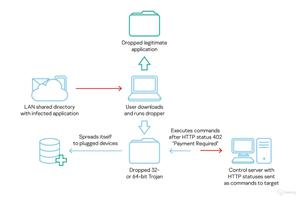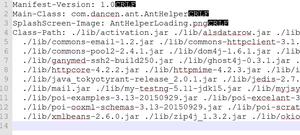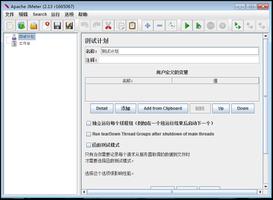Angular6封装http请求的步骤详解
最近抽空学习了一下Angular6,之前主要使用的是vue,所以免不了的也想对Angular6提供的工具进行一些封装,今天主要就跟大家讲一下这个http模块。
之前使用的ajax库是axios,可以设置baseurl,公共头部;集中捕捉错误等,由于Angular6的依赖注入机制,是不能通过直接修改http模块暴露的变量来封装的,但是通过官方文档我们知道可以通过拦截器(HttpInterceptor)来实现这一功能。
拦截器可以拦截请求,也可以拦截响应,那么通过拦截请求就可以实现 设置baseurl,公共头部;而通过拦截响应就可以实现 集中捕获错误 。废话不多说,上代码吧。
第一步:准备工作,导入 HttpClientModule
在app.module.ts中导入 HttpClientModule,然后在imports数组中将 HttpClientModule 加入到 BrowserModule 之后,具体代码为:
import { HttpClientModule } from '@angular/common/http';
@NgModule({
imports: [
BrowserModule,
// import HttpClientModule after BrowserModule.
HttpClientModule,
],
declarations: [
AppComponent,
],
bootstrap: [ AppComponent ]
})
第二步:新建有关拦截器的文件
在app文件夹下新建http-interceptors文件夹,在其内新建base-interceptor.ts,index.ts两个文件。其中,base-interceptor.ts是用于设置拦截器的注入器文件,index.ts则为扩展拦截器的提供商。
### base-interceptor.ts
import { Injectable } from '@angular/core';
import {
HttpEvent, HttpInterceptor, HttpHandler, HttpRequest,
HttpErrorResponse
} from '@angular/common/http';
import { throwError } from 'rxjs'
import { catchError, retry } from 'rxjs/operators';
/*设置请求的基地址,方便替换*/
const baseurl = 'http://localhost:8360';
@Injectable()
export class BaseInterceptor implements HttpInterceptor {
constructor() {}
intercept(req, next: HttpHandler) {
let newReq = req.clone({
url: req.hadBaseurl ? `${req.url}` : `${baseurl}${req.url}`,
});
/*此处设置额外的头部,token常用于登陆令牌*/
if(!req.cancelToken) {
/*token数据来源自己设置,我常用localStorage存取相关数据*/
newReq.headers =
newReq.headers.set('token', 'my-new-auth-token')
}
// send cloned request with header to the next handler.
return next.handle(newReq)
.pipe(
/*失败时重试2次,可自由设置*/
retry(2),
/*捕获响应错误,可根据需要自行改写,我偷懒了,直接用的官方的*/
catchError(this.handleError)
)
}
private handleError(error: HttpErrorResponse) {
if (error.error instanceof ErrorEvent) {
// A client-side or network error occurred. Handle it accordingly.
console.error('An error occurred:', error.error.message);
} else {
// The backend returned an unsuccessful response code.
// The response body may contain clues as to what went wrong,
console.error(
`Backend returned code ${error.status}, ` +
`body was: ${error.error}`);
}
// return an observable with a user-facing error message
return throwError(
'Something bad happened; please try again later.');
};
}
### index.ts
import { HTTP_INTERCEPTORS } from '@angular/common/http';
import { BaseInterceptor } from './base-interceptor';
/** Http interceptor providers in outside-in order */
export const httpInterceptorProviders = [
{ provide: HTTP_INTERCEPTORS, useClass: BaseInterceptor, multi: true },
];
/*
Copyright 2017-2018 Google Inc. All Rights Reserved.
Use of this source code is governed by an MIT-style license that
can be found in the LICENSE file at http://angular.io/license
*/
通过克隆修改 req 对象即可拦截请求,而操作 next.handle(newReq) 的结果即可拦截响应。如果需要修改,可直接扩展 base-interceptor.ts或 参考 base-interceptor.ts 文件新建其他文件,然后在 index.ts 中正确引入该拦截器,并将其添加到 httpInterceptorProviders 数组中即可。
第三步:注册提供商
在app.module.ts中加入以下代码:
import { httpInterceptorProviders } from './http-interceptors/index'
@NgModule({
declarations: [
AppComponent
],
imports: [
BrowserModule,
HttpClientModule
],
providers: [
httpInterceptorProviders
],
bootstrap: [AppComponent]
})
第四步,提取baseurl
为了方便后台修改baseurl,我们可以将baseurl提取为全局变量,在index.html中进行设置,
# index.html 增加
<script>
window.baseurl = "http://localhost:8360"
</script>
# base-interceptor.ts 修改
const baseurl = window.baseurl;
这样一来,如果后台要修改的话,只需修改index.html中的变量即可,无需再次编译。还有,像这些后期可能更改的变量,建议是直接放在index.html中,因为缓存的原因,如果放在js文件中再引入的话,文件并不能及时更新或是每次都需要更改文件名,会导致不必要的麻烦。
至此,Angular6的http模块封装已经基本完成,如果有需要可以自行扩展,可参考第二步。
ps:下面看下vue与angular的区别
1.vue仅仅是mvvm中的view层,只是一个如jquery般的工具库,而不是框架,而angular而是mvvm框架。
2.vue的双向邦定是基于ES5 中的 getter/setter来实现的,而angular而是由自己实现一套模版编译规则,需要进行所谓的“脏”检查,vue则不需要。因此,vue在性能上更高效,但是代价是对于ie9以下的浏览器无法支持。
3.vue需要提供一个el对象进行实例化,后续的所有作用范围也是在el对象之下,而angular而是整个html页面。一个页面,可以有多个vue实例,而angular好像不是这么玩的。
4.vue真的很容易上手,学习成本相对低,不过可以参考的资料不是很丰富,官方文档比较简单,缺少全面的使用案例。高级的用法,需要自己去研究源码,至少目前是这样。
总结
以上所述是小编给大家介绍的Angular6封装http请求的步骤详解,希望对大家有所帮助,如果大家有任何疑问请给我留言,小编会及时回复大家的。在此也非常感谢大家对网站的支持!
以上是 Angular6封装http请求的步骤详解 的全部内容, 来源链接: utcz.com/z/355780.html









